Airbnb Reviews Scraper
By / / No Comments
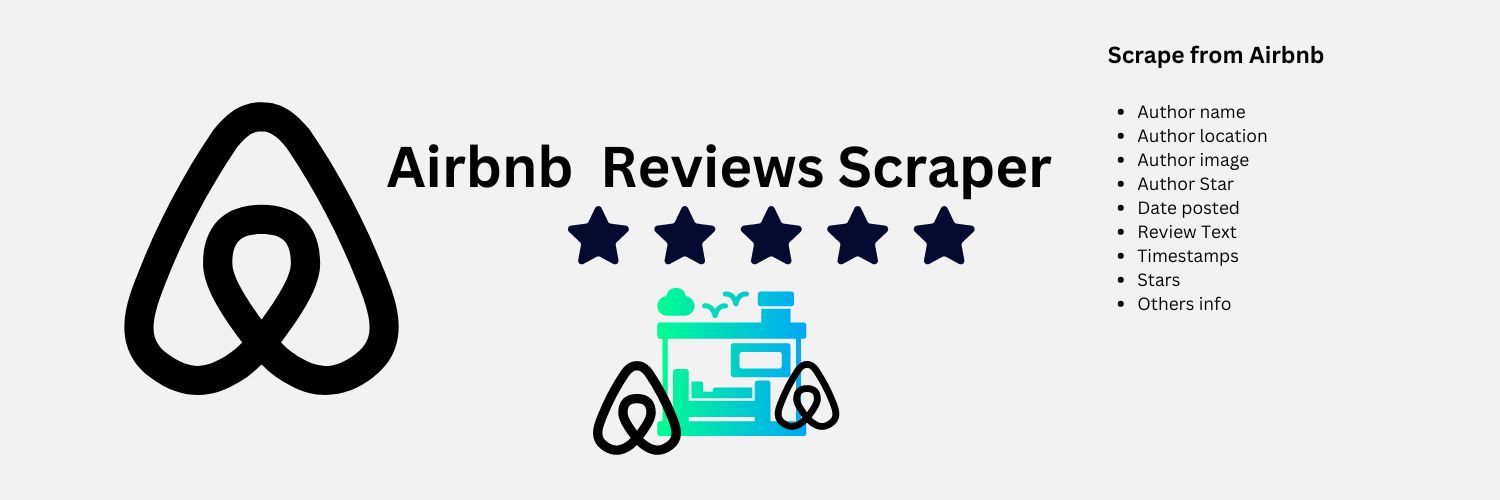
Table of Contents
ToggleWhy are Airbnb reviews crucial?
Airbnb reviews are crucial for several reasons, especially from a marketer’s perspective. Firstly, they serve as powerful social proof, influencing potential guests’ decision-making process. Positive reviews act as endorsements, reassuring prospective guests about the quality and reliability of a property. This builds trust and credibility, which are essential factors in converting inquiries into bookings. Moreover, Airbnb reviews contribute to a property’s visibility within the platform. Listings with higher ratings and positive reviews are more likely to appear at the top of search results, increasing their exposure to potential guests. This enhanced visibility translates into higher booking rates and improved occupancy levels. Additionally, Airbnb reviews provide valuable feedback for hosts and marketers alike. They offer insights into guests’ preferences, experiences, and pain points, allowing hosts to tailor their offerings to better meet guest expectations. Marketers can leverage this feedback to identify unique selling points and craft compelling messaging that resonates with their target audience. Ultimately, Airbnb reviews play a pivotal role in driving bookings, enhancing visibility, and refining marketing strategies to maximize the success of properties on the platform.
How do reviews impact bookings?
Reviews have a profound impact on bookings within the Airbnb ecosystem, influencing the decisions of potential guests in several key ways:
- Trust and Credibility: Reviews serve as a form of social proof, signaling to potential guests the credibility and reliability of a property. When prospective guests see positive reviews from previous visitors, they feel more confident in booking the accommodation. Trust is a fundamental component of any transaction, and positive reviews help establish trust between hosts and guests.
- Decision-Making Process: Reviews play a crucial role in the decision-making process of potential guests. Before making a booking, guests often read through reviews to gauge the quality of the property and the experience offered by the host. Positive reviews can sway hesitant guests to proceed with a booking, while negative reviews may deter them from choosing a particular property.
- Reputation and Ranking: Airbnb’s search algorithm takes into account various factors, including the number and quality of reviews, when ranking listings in search results. Properties with higher ratings and a greater number of positive reviews are more likely to appear at the top of search results. This increased visibility leads to higher click-through rates and ultimately more bookings.
- Booking Confidence: Positive reviews instill confidence in potential guests, assuring them that they are making the right choice by booking a particular property. Conversely, a lack of reviews or negative feedback can raise doubts and prompt guests to explore other options. Positive reviews provide validation and affirmation, encouraging guests to proceed with their booking with confidence.
- Guest Expectations: Reviews help set realistic expectations for guests regarding the quality of the property and the overall guest experience. By reading about previous guests’ experiences, potential guests can anticipate what to expect during their stay. Accurate and detailed reviews help manage guest expectations, reducing the likelihood of disappointment and negative experiences.
- Feedback Loop for Improvement: Reviews provide valuable feedback for hosts, highlighting areas of strength and areas for improvement. Hosts can use this feedback to enhance the guest experience, address any issues raised by previous guests, and make necessary improvements to their property. By actively responding to feedback and continuously striving to improve, hosts can attract more positive reviews and, in turn, more bookings.
Why use our Airbnb Reviews Scraper in Cloud?
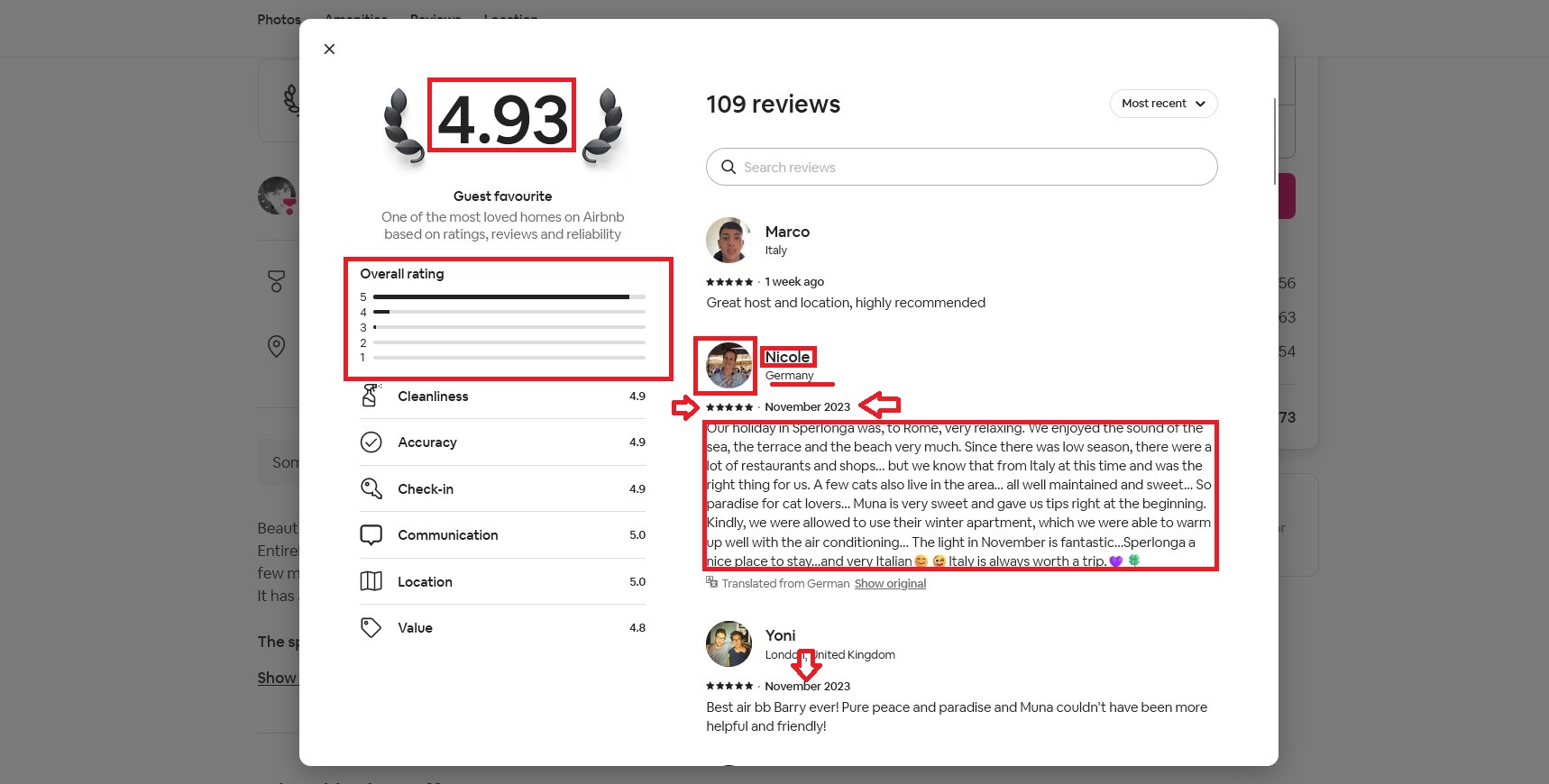
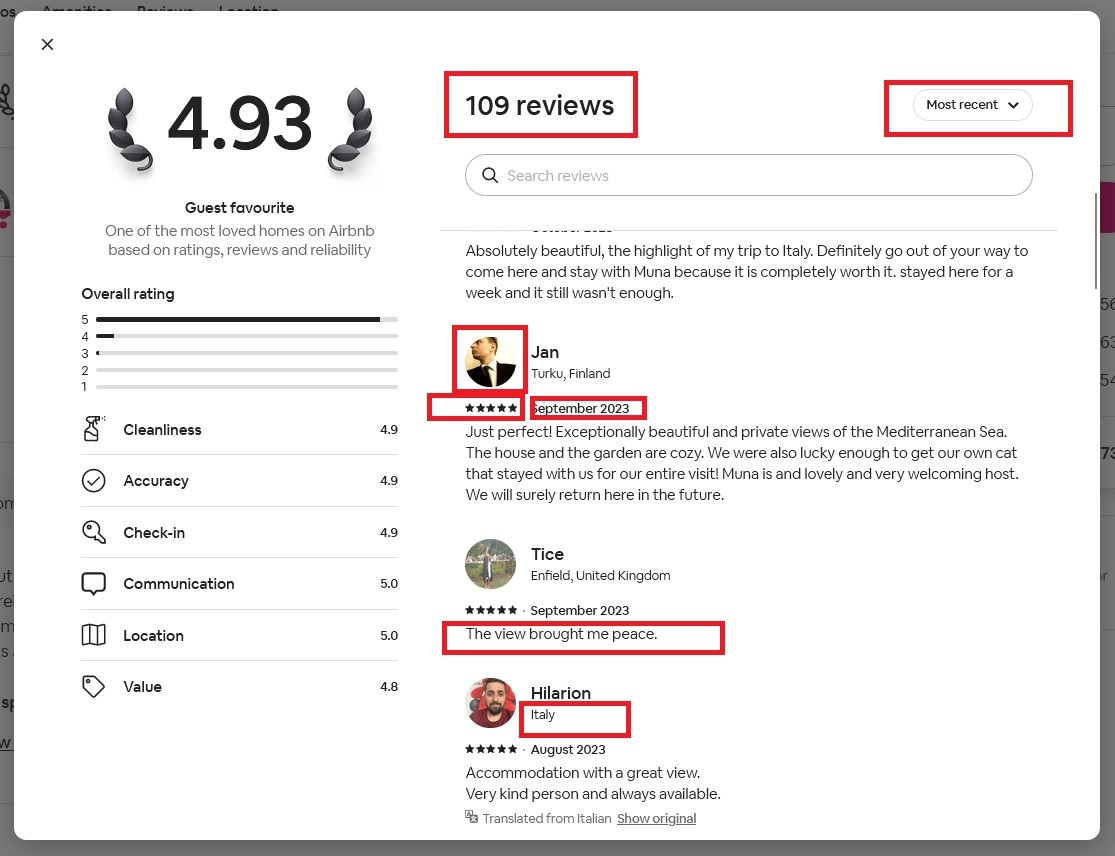
Scraping Airbnb Reviews can be a long process for any individuals, copy and pasting each review info is very boring process. Hosts of Airbnb might need to hire a VA or a might be doing the task without proper interest as it is pure boring task, copy, paste the data into excel file and then review through the information. DataScraperAPI airbnb reviews scraper solves this problem. Our Airbnb Reviews Scraper is built for no code users, meaning any user without knowledge of coding can use our scraper. To do that, he or she has to use our WEB UI built for no code users, in cloud, no need to install any program. Everything can be handled in browser.
Remember, we have 2 types of solution for Airbnb Reviews Scraping
For users without coding knowledge :
Step 1 :
An user of this category should login to our Dashboard . To use the airbnb reviews scraper, user should have at least 1000 credits as credit balance.
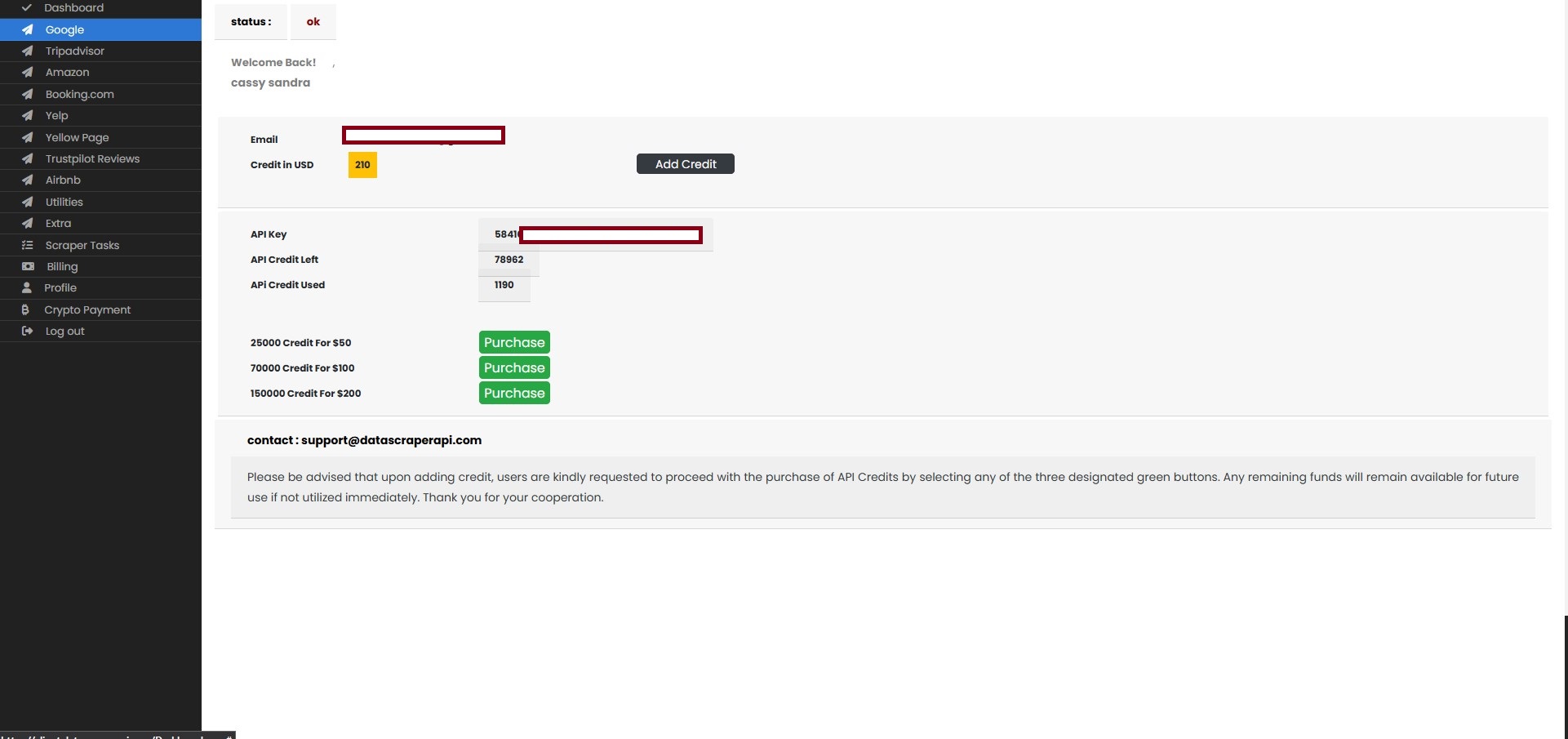
Step 2 :
Look for Airbnb > Airbnb Reviews Scraper from the left side menu which will look like below image
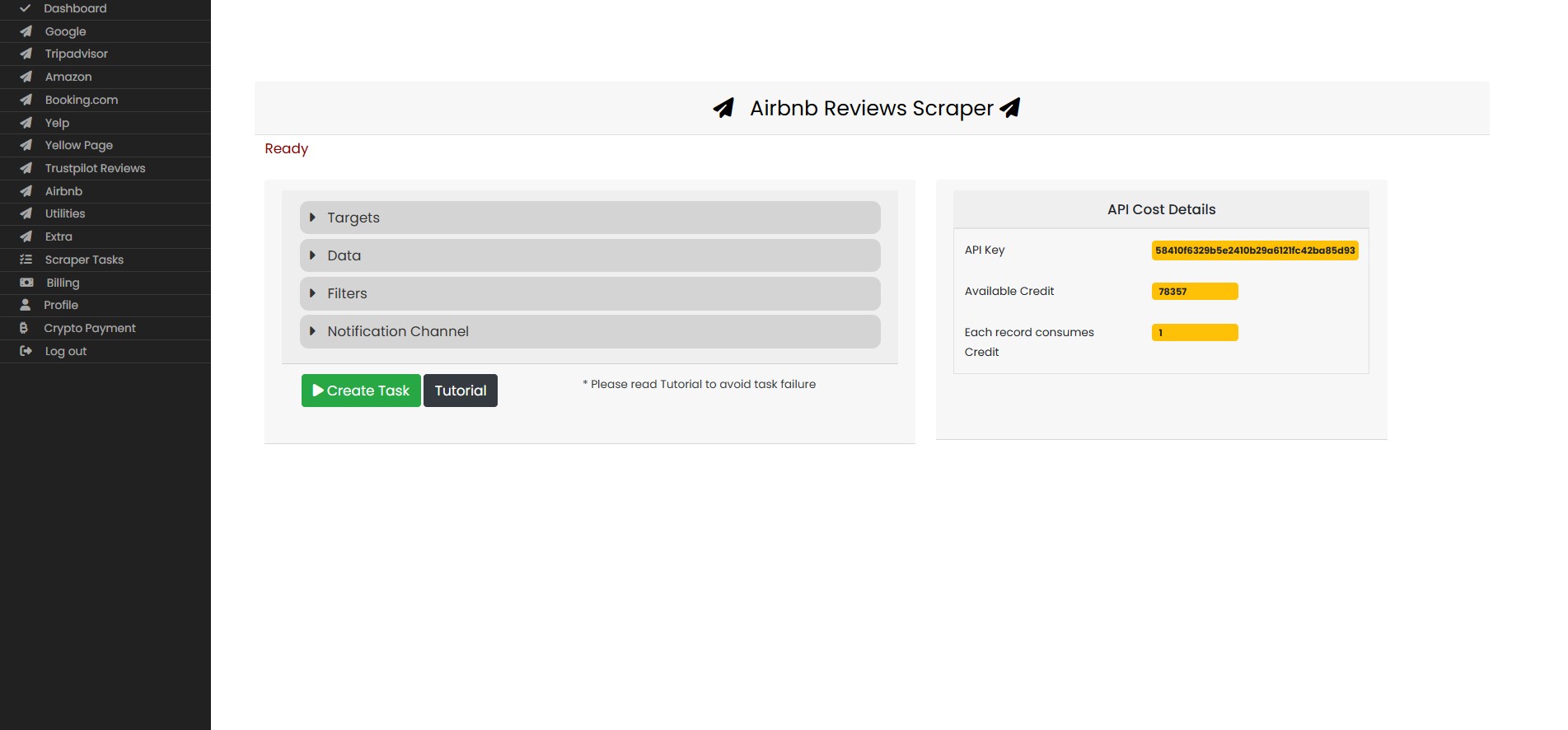
Step 3 :
Input the room url in the targets area 1 url per line
input the results count as well
Then create the task, for help, there is a tutorial button present as well.
Step 4 :
Finally, look for the Scraper Tasks
There you can find the created task, once the task is complete, it will show a file download link [image attached below]
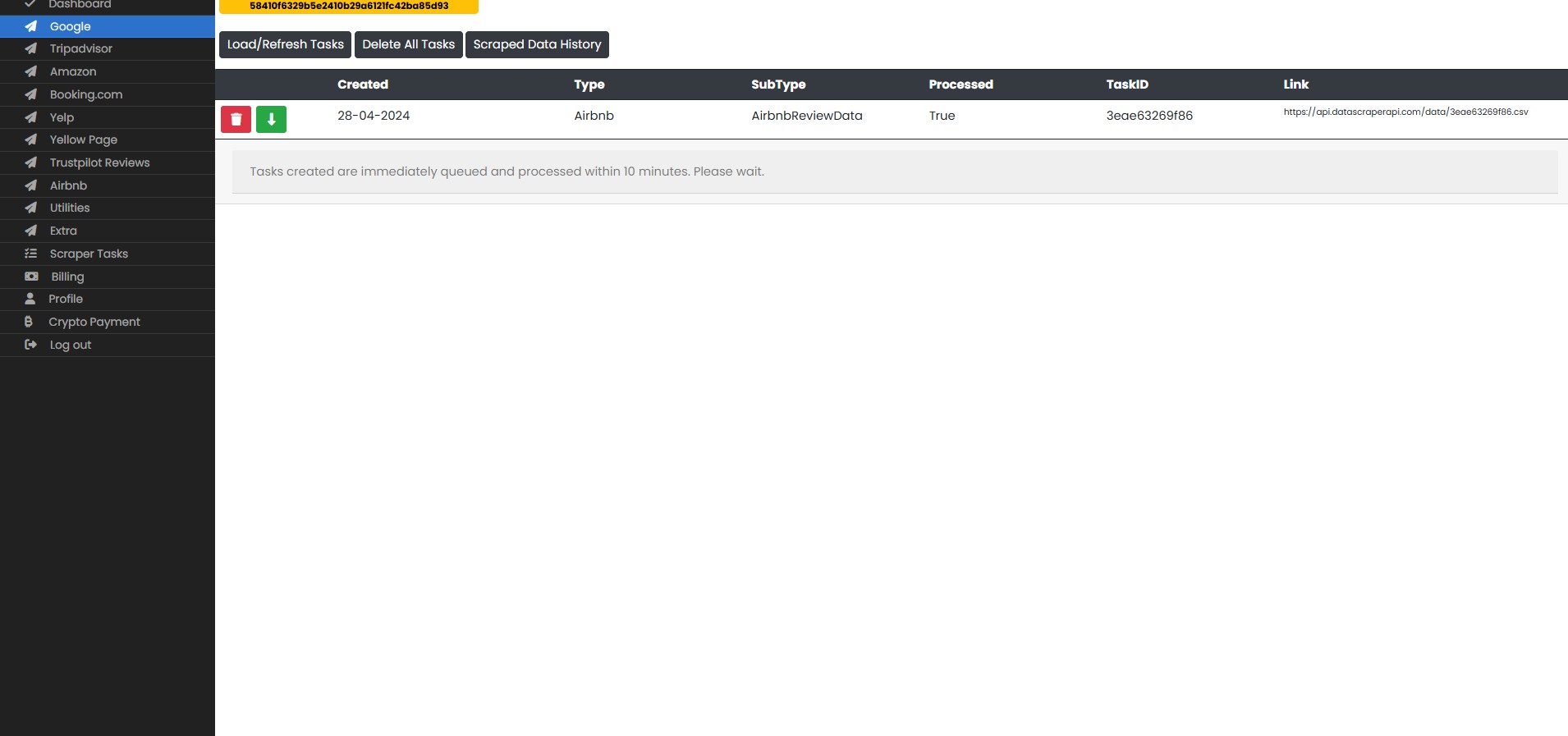
For users with coding knowledge :
Users with coding knowledge can use our API created for automated access and task creation, retrieve the data, delete and many more options. The API is totally task based and all the operation done via API also reflects in the WEB UI. Developers can find in depth details in our Documentation
Data Formats Available
Currently we provide CSV data with proper headers. JSON data can be available on request.
Again,
CSV
JSON (on request via API)
Records that you will get in the file are as follows :
Stayed
Review Data
Review Text
Name
Country
Timestamp
Star Count
Challenges Faced by Airbnb Hosts
Managing reviews manually on Airbnb can be a time-consuming and labor-intensive process for hosts, but it’s a crucial aspect of maintaining a positive reputation and attracting bookings. As a marketer, it’s important to understand the challenges and benefits of manual review management:
Challenges:
- Time-Consuming: Manually monitoring and responding to reviews requires a significant investment of time. Hosts must regularly check their Airbnb dashboard for new reviews, read through each one, and craft personalized responses.
- Resource-Intensive: Review management can be resource-intensive, especially for hosts managing multiple properties. Responding to reviews promptly and professionally requires attention to detail and effective communication skills.
- Inconsistency: Without a streamlined process in place, there’s a risk of inconsistency in how reviews are handled. Some reviews may go unnoticed or receive delayed responses, which can negatively impact guest satisfaction and the host’s reputation.
- Limited Scalability: Manual review management becomes increasingly challenging as a host’s portfolio grows. Keeping up with a high volume of reviews across multiple properties can quickly become overwhelming and lead to missed opportunities for engagement.
Benefits:
- Personalized Interaction: Manual review management allows hosts to provide personalized responses to guests, demonstrating a commitment to customer satisfaction and guest experience. This personalized interaction can foster positive relationships and encourage repeat bookings.
- Opportunity for Improvement: Engaging with reviews manually gives hosts valuable insights into guest experiences, preferences, and areas for improvement. By actively listening to feedback and addressing concerns, hosts can enhance their offerings and differentiate themselves from competitors.
- Building Trust and Credibility: Responding to reviews in a timely and professional manner helps build trust and credibility with potential guests. Positive interactions with previous guests can serve as social proof and reassure prospective guests about the quality of the host’s accommodations and hospitality.
- Enhanced Reputation Management: Manual review management allows hosts to actively manage their online reputation and address any negative feedback or issues raised by guests. By addressing concerns publicly and transparently, hosts can demonstrate their commitment to guest satisfaction and mitigate the impact of negative reviews.
What is an Airbnb Reviews Scraper?
An Airbnb Reviews Scraper is a software tool developed by programmers to automate the process of extracting reviews from Airbnb listings. Essentially, it’s a program designed to mimic the actions of a human user browsing through Airbnb’s website and collecting information about properties and the reviews left by guests. From a programmer’s perspective, an Airbnb Reviews Scraper operates using web scraping techniques, which involve programmatically accessing and navigating through web pages to extract specific data elements.
Here’s how an Airbnb Reviews Scraper works:
- Web Scraping: The scraper interacts with Airbnb’s website using HTTP requests, fetching HTML content from listing pages where reviews are displayed.
- Parsing HTML: Once the HTML content is retrieved, the scraper parses it to identify the sections containing review data. This involves using techniques like XPath or CSS selectors to locate specific elements such as review text, ratings, dates, and guest profiles.
- Data Extraction: After identifying the relevant sections, the scraper extracts the desired data from the HTML, converting it into a structured format that can be processed and analyzed. This may involve cleaning and formatting the data to ensure consistency and accuracy.
- Automation: Unlike manual methods where a human user would have to visit each listing and manually copy-paste the reviews, the scraper automates this process. It systematically traverses through multiple listings, extracting reviews from each one in a fraction of the time it would take a human user.
- Storage and Processing: The extracted review data is typically stored in a database or file for further processing and analysis. Programmers can implement features to filter, sort, or analyze the collected data according to specific criteria.
- Customization: Depending on the requirements, programmers can customize the scraper to include additional functionalities such as filtering reviews based on specific criteria (e.g., location, property type) or performing sentiment analysis on review text.
Features to Look for in an Airbnb Reviews Scraper
Customizable filters
Customizable filters in the context of an Airbnb Reviews Scraper are like personalized search criteria that marketers can tailor to their specific needs and preferences. Think of them as a set of knobs and dials that marketers can adjust to fine-tune the types of reviews they want to extract from Airbnb listings.
From a marketer’s perspective, customizable filters offer several benefits:
- Targeted Insights: By using filters such as location, property type, or date range, marketers can narrow down their focus to specific segments of reviews that are most relevant to their business goals. For example, a marketer managing properties in a particular city may use location filters to extract reviews only from listings within that city, providing targeted insights into the local market.
- Personalization: Customizable filters allow marketers to personalize their review extraction process according to their unique requirements. They can adjust the filters based on their target audience, business objectives, or areas of interest, ensuring that the extracted reviews align with their specific needs.
- Efficiency: Filters help streamline the review extraction process by eliminating irrelevant data and focusing only on the reviews that matter most. This saves marketers time and effort by reducing the need to sift through large volumes of reviews manually, allowing them to quickly access the insights they need to make informed decisions.
- Data-driven Decision Making: By using customizable filters to extract targeted sets of reviews, marketers can gather valuable data-driven insights to inform their decision-making process. Whether it’s understanding guest preferences, identifying trends, or evaluating competitor performance, filtered reviews provide marketers with the information they need to make strategic choices that drive business success.
- Competitive Advantage: Customizable filters give marketers a competitive advantage by allowing them to access and analyze insights that may not be readily available to their competitors. By leveraging filters to extract niche or specific types of reviews, marketers can uncover hidden opportunities and gain a deeper understanding of their target market, giving them a competitive edge in the industry.
Review sentiment analysis
Review sentiment analysis, from a marketer’s perspective, is like having a virtual assistant that can read between the lines of customer feedback to understand the underlying emotions and attitudes expressed in reviews. It goes beyond simply counting the number of positive, negative, or neutral comments, diving deeper into the sentiment behind each review.
Here’s how review sentiment analysis works and why it’s valuable for marketers:
- Understanding Customer Emotions: Sentiment analysis uses natural language processing (NLP) techniques to analyze the text of reviews and identify the emotions and sentiments expressed by customers. It can recognize whether a review is positive, negative, or neutral, as well as the specific emotions conveyed, such as satisfaction, frustration, excitement, or disappointment.
- Insight into Customer Experience: By analyzing the sentiment of reviews, marketers gain valuable insights into the overall customer experience and satisfaction levels. Positive sentiment indicates happy and satisfied customers, while negative sentiment signals areas of concern or dissatisfaction. This information helps marketers identify strengths to capitalize on and areas for improvement to address.
- Identifying Trends and Patterns: Sentiment analysis enables marketers to identify trends and patterns in customer feedback across multiple reviews. They can uncover recurring themes, common pain points, and emerging issues that may require attention. This allows marketers to proactively address customer concerns and make strategic decisions to enhance the overall customer experience.
- Reputation Management: Monitoring sentiment in reviews helps marketers manage their brand’s reputation effectively. Positive sentiment reinforces brand loyalty and attracts new customers, while negative sentiment can damage brand perception and deter potential customers. By tracking sentiment trends over time, marketers can take proactive steps to address negative feedback and promote positive experiences.
- Competitive Analysis: Sentiment analysis also provides valuable insights into competitors’ performance and customer satisfaction levels. Marketers can compare sentiment scores across different brands or listings within their industry to benchmark their own performance and identify areas where they can differentiate themselves.
- Data-Driven Decision Making: Ultimately, sentiment analysis empowers marketers to make data-driven decisions based on customer feedback. By understanding the sentiment behind reviews, marketers can prioritize initiatives that have the greatest impact on improving customer satisfaction and driving business growth.
Pricing and plans
Pricing and plans, from a marketer’s perspective, are like the menu options at a restaurant – they outline the different offerings available to customers and help them choose the package that best suits their needs and budget. When it comes to products or services like an Airbnb Reviews Scraper, pricing and plans play a crucial role in attracting customers, maximizing revenue, and ensuring customer satisfaction.
Here’s how pricing and plans work and why they’re important for marketers:
- Tiered Pricing Structure: Marketers often offer tiered pricing options with varying features and benefits to cater to different customer segments. For example, they may offer a basic plan with essential features at a lower price point, a standard plan with additional features at a mid-range price, and a premium plan with advanced functionalities at a higher price.
- Transparent Pricing: Clear and transparent pricing is essential for building trust with customers and setting realistic expectations. Marketers should clearly communicate the cost of each plan, including any additional fees or charges, to avoid confusion and ensure transparency.
- Value Proposition: Pricing and plans should clearly communicate the value proposition of each offering. Marketers should highlight the unique features and benefits of each plan to demonstrate the value customers will receive in exchange for their investment.
- Flexible Options: Offering flexible pricing and plan options allows marketers to accommodate the diverse needs and budgets of their customers. This may include monthly or annual subscription plans, as well as the option to upgrade or downgrade plans based on changing requirements.
- Free Trials or Demos: Marketers may offer free trials or demos of their product or service to allow customers to experience the value firsthand before making a purchasing decision. This helps build confidence in the offering and reduces the perceived risk for customers.
- Promotions and Discounts: Marketers may also use promotions and discounts to incentivize customers to sign up for a specific plan or upgrade to a higher-tier plan. This can help drive sales and encourage customers to take action.
- Customer Support and Satisfaction: Pricing and plans should also include provisions for customer support and satisfaction. Marketers should ensure that customers have access to timely support and assistance, as well as options for refunds or cancellations if they are not satisfied with the product or service.
How to Use an Airbnb Reviews Scraper
Using an Airbnb Reviews Scraper is straightforward and user-friendly. Here’s a step-by-step guide:
- Choose a reputable Airbnb Reviews Scraper: Research and select a scraper tool that meets your requirements and budget.
- Set up your account: Sign up for an account on the scraper platform and complete the registration process.
- Enter search criteria: Specify your search criteria, such as location, property type, and date range, to retrieve relevant reviews.
- Initiate scraping: Start the scraping process to gather reviews from Airbnb listings based on your search parameters.
- Review and analyze data: Once the scraping is complete, review the extracted data and analyze insights to identify trends and patterns.
- Take action: Use the insights gained from the reviews to optimize your listings, improve guest experiences, and enhance your hosting performance.
